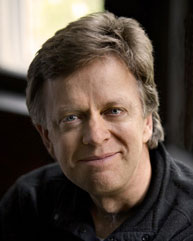
6 Questions for Ted Conover

1. Your current book project is an exploration of roads around the world and “the costs and benefits of connectedness.” What initially drew your attention to this particular “road” in Zanskar?
Roads versus isolation is a big theme in my book, and when I first heard of the chaddar, I thought of remoteness tempered by this extremely tenuous connection to the outside world and was intrigued. Later I learned that the Indian government has a plan to put in a road above the chaddar—that, in other words, the chaddar might be even more temporary than I thought, subject to replacement by a massive construction project. How people thought about that, I imagined, would be worth finding out. Beyond that, the chaddar trek sounded pretty thrilling to me; and the trip also serves as a way to tell the story.
2. The walk sounds physically demanding; were you aware in advance how physically difficult this experience might be and did you do anything special to train for it?
Mainly I was afraid of getting too cold. [My guide], Seb, had done the trek numerous times and, via email, helped with a lot of my questions about gear—mainly what to wear when you stop moving, and how to sleep. I’m medium-fit and do a lot of daily walking living in New York City.
3. You mention that sixteen-year-old girls from Reru walk on the ice and snow in their socks, or wade into ice-cold rivers in their bare feet; it seems apparent that the Zanskari don’t view cold the same way that Westerners do. Do they recognize that their climate is brutally demanding, dangerous even, or do they accept it as part of their home?
They understand cold better than I ever will. I think that, to the students, getting your feet wet was something unpleasant—but it was possible only because, paradoxically, it was so warm out that the ice was thin. That’s inconvenient but not the kind of cold—the wounding cold—that they really worry about.
4. We see people react differently to you throughout the essay—some are willing to open up, while at least one wanted to stay as far away as possible. How do you think the Zanskari, whose contact with the outside world was quite limited until forty years ago, view the presence of Westerners?
They are an extraordinarily lovely people. They’ve had contact with the larger world, through traders and caravans and Tibetan Buddhism, for centuries. Toward us they were almost invariably welcoming, warm and curious.
5. You describe several rituals that the Zanskari perform before and during the chaddar walk to promote a safe journey—the mock departure, for example, or the throwing of pebbles toward home; did any of their spirituality trickle down to you and Seb? Or did you view the walk in more pragmatic terms, keeping one foot in front of the other?
Actually, I didn’t tell the whole story of the monk who helped to determine an auspicious date for our departure. When Seb and I were sitting around drinking tea with him, our host, Lobzang, asked if we had any questions of our own that the monk might help us with. I knew that Seb had been thinking about getting married for some time—his girlfriend was back in England—and I suggested he ask the monk about that. So he did—and Seb ended up marrying her, about five months later, on the exact day the monk specified.
I’m neither very religious nor superstitious but … given a choice between starting a hard trip on the date a monk says is best, versus starting on any other date, I’d totally go with the monk.
6. Finally, what are you enjoying reading these days and how, if at all, does it inform your own writing?
I finally read Cormac McCarthy’s The Road, which I guess I’m not alone in finding profoundly good (if scary to get started on). Next up is Stacey D’Erasmo’s new novel, Sky Below, which I heard her read from at the Bread Loaf Writer’s Conference.
Really good fiction inspires me—nonfiction narrative is a pretty new form, and there are so many directions to explore. Next to my bed is Catherine Barnett’s collection Into Perfect Spheres Such Holes are Pierced. I think that everyone who writes nonfiction should read poetry every day. The most inspirational book for my book on roads was probably John Stilgoe’s Outside Lies Magic: Regaining History and Awareness in Everyday Places. It’s a fantastic book about seeing more carefully.
